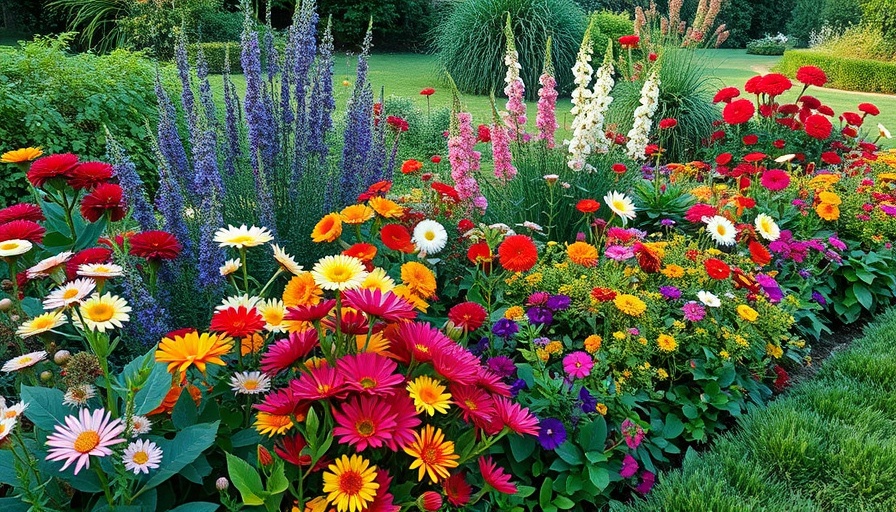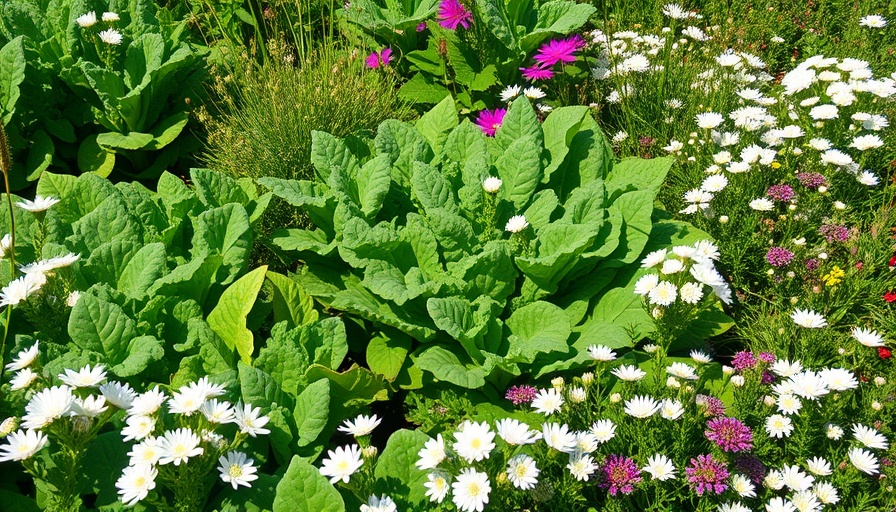
Discover the Beauty of Naturalistic Planting at RHS Wisley
The newly opened Oudolf Landscape at RHS Wisley is a masterclass in planting design, showcasing the revolutionary naturalistic style of renowned designer Piet Oudolf. This innovative approach is not just for large gardens—whether you have a sprawling backyard or a cozy courtyard, the lessons gleaned from this spectacular installation can enhance your garden space dramatically.
Understanding Piet Oudolf's Signature Style
Piet Oudolf’s naturalistic planting style emphasizes a blend of plants that thrive in local conditions, reflecting patterns found in nature. As outlined in his collaborative book with Noel Kingsbury, the essence of this method is to combine species that share similar care needs and natural habitats. The result? An effortlessly beautiful border that reduces the maintenance and enhances biodiversity, appealing to both amateurs and professional landscapers alike.
Block vs. Matrix Planting: The Core of Oudolf’s Design
One of the fundamental lessons from the Oudolf Landscape is the differentiation between block and matrix planting. Block planting involves massing a single species together—easy for maintenance and visibility. In contrast, matrix planting combines layers of plants, primarily grasses, with perennials interspersed, resembling the rich diversity seen in natural settings.
Immersive Pathways: Engaging with the Design
The new design at Wisley introduces a sinuous path that not only provides accessibility but also encourages visitors to engage with the planting from various angles, heightening the sensory experience. This zig-zag pathway slows down visitors, allowing moments of pause and appreciation for the meticulous arrangements of plants. As you walk through the borders, you’re enveloped by the flora, offering a refreshing break from the conventional linear designs often found in public gardens.
The Role of Repetition and Contrast
A lesson woven deeply into the Oudolf borders is the importance of repetition and contrast. Strategic repetition of plant species creates a harmonious flow, while varied shapes and colors introduce visual interest. The design emphasizes the artistic blend of soft and hard elements, ensuring that each seasonal transition reveals unique layers of beauty—whether through wave-like grasses or bold clusters of flowers.
Learning from Oudolf: Applying Naturalistic Principles
Adopting Oudolf’s principles doesn’t mean every homeowner needs a vast area. By starting with foundational grasses and layering smaller perennials, even compact gardens can achieve stunning results. Oudolf encourages gardeners to focus on plant structure rather than just flowering, creating year-round interest and requiring less rigorous maintenance.
Sustainable Gardening Practices
The Oudolf Landscape not only highlights aesthetics but also prioritizes sustainability and wildlife well-being. With minimal watering and the use of perennial plants, this approach conservatively manages resources while creating habitats for local fauna. Leaving plants standing through winter provides cover and nourishment for birds, escalating the garden’s ecological value.
Transform Your Garden—One Lesson at a Time
The best way to absorb these insights is by experiencing them firsthand. The RHS Wisley’s Oudolf Landscape stands as a vivid example of how naturalistic planting can transform environments. Even if you can’t visit, consider how these principles might be adapted to your own garden style, echoing nature’s beauty while offering a less laborious gardening experience. As the landscape continues to mature, it will only get better, encouraging a seamless blend of natural beauty and human interaction.
So whether you’re embarking on a new garden project or redesigning an existing space, let the lessons from the Oudolf Landscape inspire your approach to home gardening. Remember, every garden, no matter how big or small, can embody the artistry of nature.
 Add Row
Add Row  Add
Add 






Write A Comment